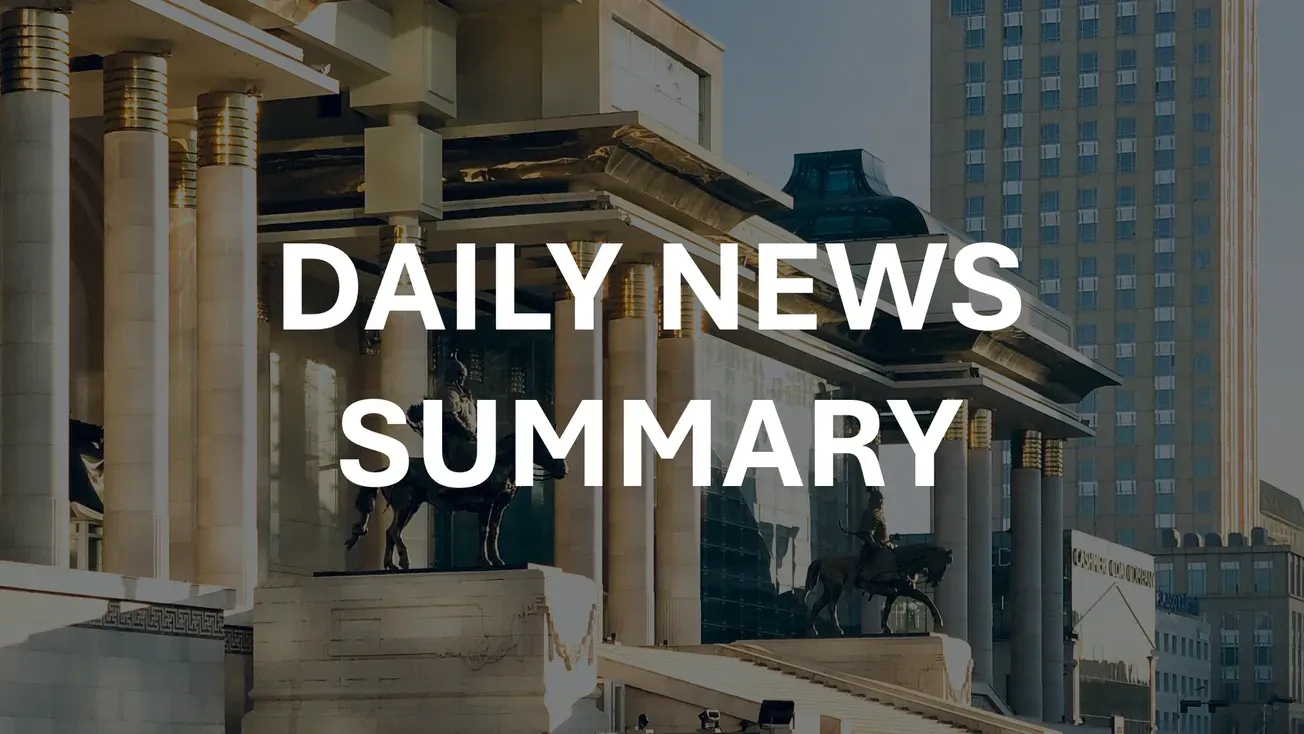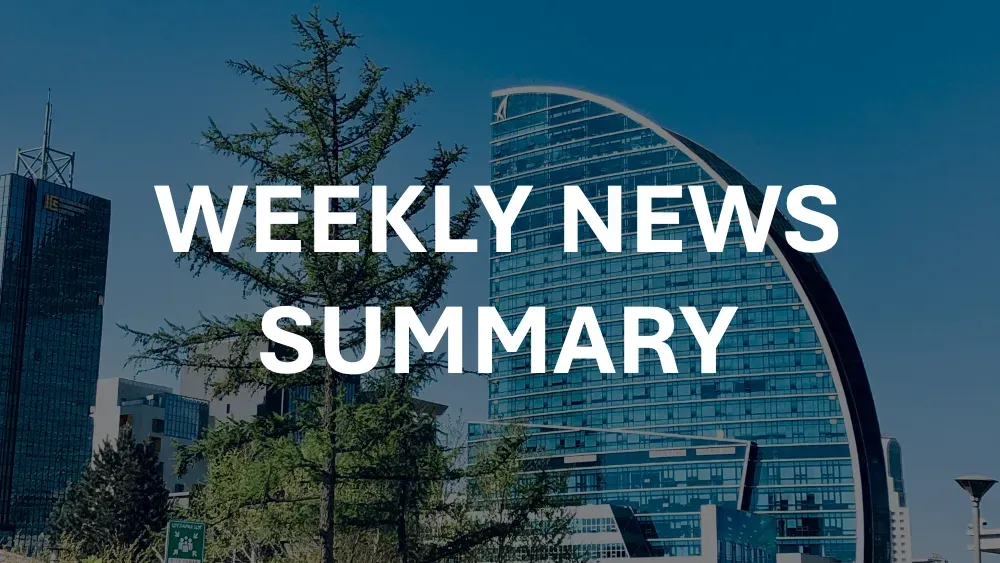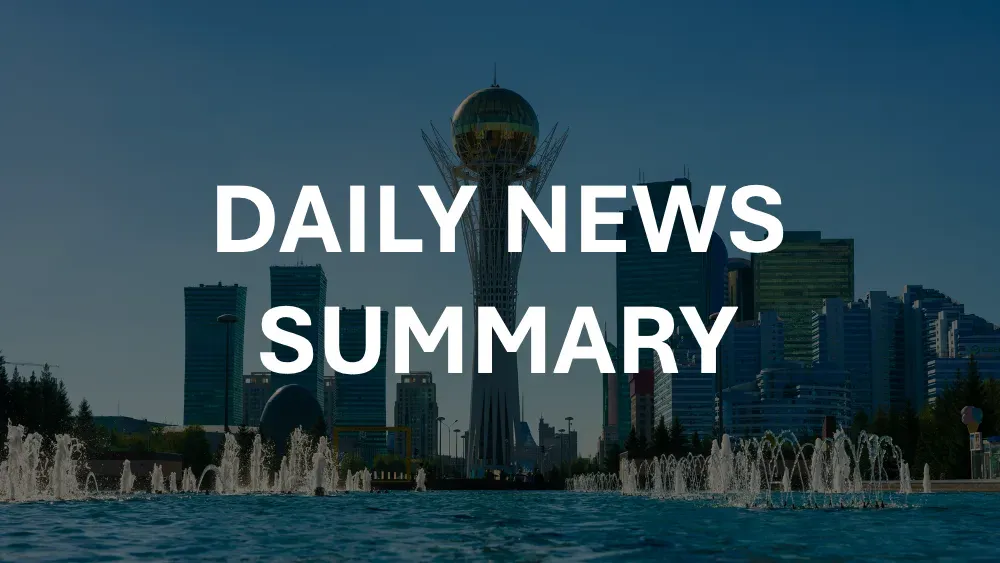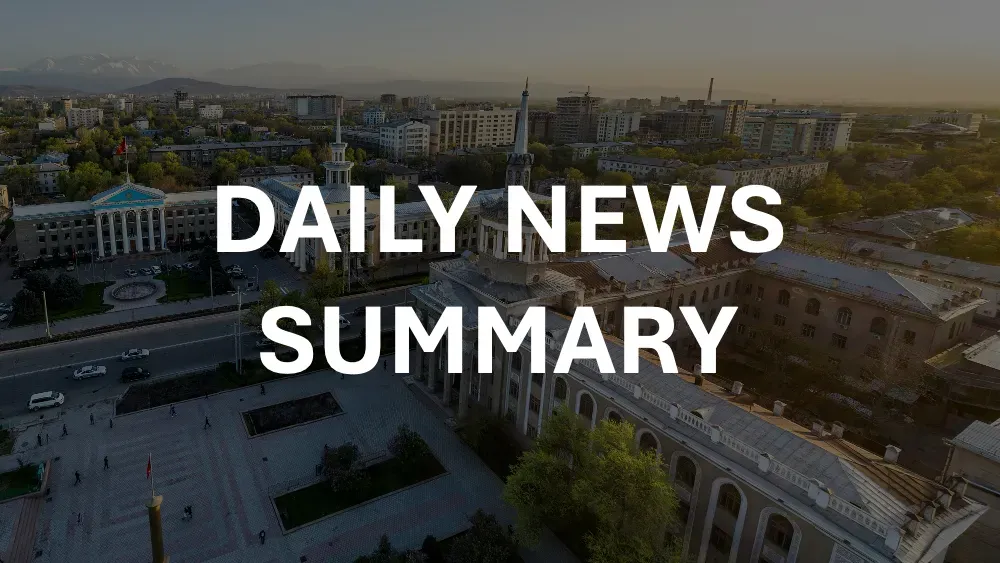📍 Get daily intelligence from Mongolia and Central Asia. Lexica News delivers local news that shapes global decisions—synthesized from local sources international media misses.
Last Updated: October 2025
The 2012 shutdown of Oyu Tolgoi Mongolia operations triggered a documented $4.1 billion foreign direct investment reversal, with FDI falling from $4.5 billion in 2011 to negative $4.1 billion in 2016. This reversal accompanied multiple stakeholder conflicts including herder community complaints filed with the World Bank's International Finance Corporation, contractor terminations affecting 300 employees, and environmental concerns over water resource impacts in the arid South Gobi region.
Current production data shows Rio Tinto Mongolia operations delivered 152,000 tonnes of copper in the first half of 2025, with production expected to rise over 50% in full-year 2025 as underground operations continue ramping up toward the target of 500,000 tonnes of copper annually by 2028. The project represents 25-30% of Mongolia's GDP as of 2025, though recent government assessments indicate that current benefit distribution favors Rio Tinto 75% to Mongolia's 25%, prompting active renegotiation efforts. The development timeline from 2001 discovery to current operations demonstrates patterns in stakeholder management, cost evolution, and regulatory challenges that characterize large-scale resource extraction in emerging markets.
This analysis documents the project's development phases, stakeholder conflicts, cost escalations, and operational outcomes from 2001-2025, including the October 2025 governance crisis that demonstrates how political risks can intensify during successful production phases. The recent developments provide crucial insights into the realities of mega-project implementation in Mongolia's regulatory and social environment.
The Project That Changed Mongolia Forever
The story of Oyu Tolgoi underground mining project begins in 2001, when Canadian exploration company Ivanhoe Mines discovered what would become one of the world's largest untapped copper and gold deposits in the Khanbogd sum of Mongolia's South Gobi Desert. The name "Oyu Tolgoi," meaning "Turquoise Hill" in Mongolian, would soon become synonymous with both Mongolia's mining ambitions and the complexities of foreign investment in emerging markets.
Located approximately 235 kilometers east of Dalanzadgad, the provincial capital of Ömnögovi Province, this remote desert location would host the largest financial undertaking in Mongolia's history. The discovery revealed massive reserves containing an estimated 2.7 million tonnes of copper, 1.7 million ounces of gold, 1,900 tonnes of silver, and 205,000 tonnes of molybdenum—mineral wealth that would fundamentally alter Mongolia's economic trajectory.
The project's development timeline reflects the ambitious scale and technical challenges inherent in copper mining Mongolia operations. Open-pit mining commenced in 2011, followed by the startup of the copper concentrator in 2013—the largest industrial complex ever constructed in Mongolia. However, the transition to underground operations, which began in March 2023, represents the project's most technically challenging and financially significant phase.
What makes Oyu Tolgoi particularly compelling for foreign investors is its strategic structure. The joint venture between Turquoise Hill Resources (66% ownership, majority-owned by Rio Tinto) and the Government of Mongolia (34% ownership) established a framework that many subsequent projects would attempt to replicate. This partnership model was designed to balance foreign expertise and capital with national ownership requirements—though as events would prove, this balance would be anything but stable.
The geographic and logistical challenges of operating in the South Gobi Desert cannot be understated. The site's extreme remoteness required the construction of entirely new infrastructure, from power lines to transportation networks, creating additional investment requirements and operational complexities that foreign investors must factor into their Mongolia market entry strategies.
By the Numbers: Understanding Oyu Tolgoi's Massive Scale
The financial magnitude of the Oyu Tolgoi production project defies easy comprehension, with investment figures that have evolved dramatically since the project's inception. Initial cost estimates of $4.6 billion in 2010 proved woefully inadequate, ballooning to $10 billion by 2013 and ultimately reaching over $15 billion as the project moved toward full production capacity.
This cost evolution tells a critical story for foreign investors considering mining investment Mongolia opportunities. The underground expansion alone experienced $1.45 billion in cost overruns and nearly two-year delays, demonstrating how complex technical projects in challenging environments can strain even the most sophisticated financial planning and risk management systems.
The production targets that justify these massive investments are equally impressive. Upon reaching full operational capacity, Oyu Tolgoi is expected to produce 450,000 to 500,000 tonnes of copper annually between 2028 and 2036. To put this in perspective, this volume represents enough copper to manufacture six million electric vehicles annually—positioning Mongolia as a critical supplier in the global transition to clean energy technologies.
The economic impact on Mongolia's national accounts is staggering. When operating at full capacity, Oyu Tolgoi economic impact will represent 25-30% of Mongolia's total GDP, making it one of the most economically significant industrial projects relative to national output anywhere in the world. This level of dependence creates both enormous opportunities and substantial risks for the country's economic stability.
Current production figures provide insight into the project's operational momentum. In the first half of 2025, the mine produced 152,000 tonnes of copper, matching the record H1 2024 production levels as underground operations continue ramping up. The surge in copper output has driven monthly export earnings to $500 million, with copper prices reaching a historic high of $10,600 per tonne in mid-2025. The transition from open-pit to underground mining represents not just a technical evolution but a fundamental shift in operational complexity and capital requirements.
The employment implications extend far beyond direct hiring. While the mine directly employs several thousand workers, economic multiplier effects suggest that each mining job supports 3-5 additional positions in related sectors, from transportation and logistics to professional services and retail. For foreign executives establishing operations in Mongolia, understanding these multiplier effects is crucial for assessing market opportunities and community impact strategies.
Political Risk Masterclass: What Foreign Investors Learned the Hard Way
The 2012 Oyu Tolgoi shutdown stands as one of the most instructive examples of political risk materialization in modern mining history. When operations ceased due to disputes between the Mongolian government and Rio Tinto, the immediate impact reverberated far beyond the mine site, fundamentally altering international perceptions of foreign investment political risk Mongolia and triggering a dramatic reversal in foreign direct investment flows.
The numbers tell a stark story of confidence collapse. Foreign direct investment in Mongolia plummeted from $4.5 billion in 2011 to just $95 million in 2015, with 2016 recording a devastating negative $4.1 billion in FDI flows. This wasn't merely a temporary setback—it represented a fundamental reassessment of Mongolia's investment climate by the international business community.
The root causes of this political upheaval trace back to Mongolia's struggle with resource nationalism policies and the challenge of balancing foreign investment with domestic political pressures. Between 2006 and 2016, Mongolia implemented and subsequently repealed several major pieces of legislation that created uncertainty for foreign investors, including the 2006 Windfall Profits Tax Law and the 2012 Strategic Foreign Investment Law.
These legislative changes weren't random policy experiments—they reflected deeper tensions between Mongolia's need for foreign capital and technology and domestic political demands for greater national control over mineral resources. The frequent policy reversals created what international observers termed an environment of "regulatory whiplash," where investors could never be certain that today's legal framework would remain in place tomorrow.
The impact on government relations Mongolia strategies became immediately apparent. Companies that had previously focused primarily on technical and operational excellence found themselves needing to invest heavily in political risk management, government affairs capabilities, and stakeholder engagement programs. The realization that many decisions affecting mining are made based on political rather than economic calculations forced a fundamental reassessment of how foreign companies approach the Mongolian market.
For diplomatic personnel and international executives, the Oyu Tolgoi experience highlighted the critical importance of understanding domestic political dynamics. The project's difficulties weren't simply about mining regulations—they reflected broader questions about Mongolia's relationship with foreign investment, particularly from China, and the complex interplay between economic development and national sovereignty concerns.
The anti-foreign sentiment that emerged during this period wasn't directed at all international investors equally. Chinese companies, in particular, faced heightened scrutiny despite China being Mongolia's largest trading partner and direct investor. This selective application of resource nationalism demonstrates how geopolitical considerations can override purely economic logic in investment decision-making.
October 2025: Renegotiation and Governance Tensions Resurface
The political risk dynamics that characterized Oyu Tolgoi's earlier development have resurfaced dramatically in October 2025, demonstrating that even during successful production ramp-up, governance conflicts remain an ever-present reality for foreign mining investors in Mongolia. A series of high-profile developments has reignited tensions between the Mongolian government and Rio Tinto over benefit sharing, loan terms, and operational control.
In early October 2025, Finance Minister B. Javkhlan convened a task force to renegotiate the 11.1% shareholder loan interest rate set in the original 2009 agreement. The compound interest has doubled the original $6 billion loan to approximately $12 billion, creating what government officials characterize as an unsustainable debt burden that diverts project revenues away from Mongolia. This renegotiation effort reflects broader government concerns that current arrangements deliver 75% of project benefits to Rio Tinto versus only 25% to Mongolia, according to Cabinet official S. Byambatsogt.
Simultaneously, Parliament established an oversight panel to examine shareholder agreements and governance structures, highlighting what officials describe as unfavorable terms where Mongolia's 34% equity stake lacks sales rights while Onrè (Rio Tinto's subsidiary) borrows at lower rates than the project pays on its debt. These structural concerns demonstrate how seemingly technical financial arrangements can become political flashpoints years after initial agreements.
Adding to the tensions, Mongolian board representative E. Bayasgalan was reportedly removed without formal board approval and replaced by D. Tsolmon after Rio Tinto alleged confidentiality breaches. This board-level conflict raises procedural questions about governance rights and the practical implementation of Mongolia's minority ownership position.
Perhaps most dramatically, Mongolia's intelligence agency conducted raids on Oyu Tolgoi procurement officials' residences in late October 2025, uncovering approximately MNT 10 billion in cash and investigating suspected bribery and money laundering. While these allegations target individual corruption rather than company policy, they create reputational risks and demonstrate how operational activities remain subject to intense government scrutiny even during successful production phases.
For foreign investors, these October 2025 developments reinforce critical lessons: political risk in resource-rich emerging markets doesn't diminish with operational success—it often intensifies as projects generate substantial revenues that become targets for renegotiation. The fact that these tensions emerged during a period of record production and copper prices highlights how commercial success can paradoxically increase political pressure for contract revision.
The Underground Gamble: Engineering and Financial Challenges
The transition from open-pit to underground development at Oyu Tolgoi represents one of the most technically ambitious mining projects ever attempted, with complexities that extend far beyond traditional engineering challenges. The South Gobi mining operations environment presents unique obstacles that have tested the limits of modern mining technology and project management expertise.
The underground expansion's $1.45 billion cost overrun and two-year delay resulted from a combination of technical, geological, and operational factors that offer crucial lessons for foreign investors evaluating similar megaprojects. Independent Consulting Group analysis identified poor project management as the primary culprit, but the underlying issues reflect broader challenges inherent in developing complex industrial projects in remote, challenging environments.
Geological complexities discovered during underground development required significant engineering modifications to original mining plans. The underground ore body presented stability challenges that necessitated redesigned extraction methods and additional safety infrastructure. These discoveries highlight the importance of comprehensive geological assessment and the need for foreign investors to build substantial contingency provisions into their project financing structures.
The extreme remoteness of the South Gobi Desert compounds every aspect of operational complexity. Equipment and materials must be transported across vast distances, often in harsh weather conditions, creating logistics challenges that can cascade into project delays and cost escalations. For international executives planning similar ventures, the Oyu Tolgoi experience demonstrates how location-specific factors can overwhelm even sophisticated project planning methodologies.
Technical innovation became essential for project success. Rio Tinto developed specialized underground mining techniques adapted to the Oyu Tolgoi geological conditions, including advanced ore handling systems and innovative extraction methodologies. The company's investment in the South Gobi Underground Mass Mining Institute reflects recognition that technical expertise must be continuously developed and adapted to local conditions.
The integration of underground operations with existing open-pit activities created additional coordination challenges that many initial planning documents had underestimated. Operational integration required careful sequencing of production phases, workforce management across multiple mining methods, and complex logistics coordination that demanded entirely new operational procedures.
Risk management lessons from the underground development experience extend beyond mining-specific concerns. The project's difficulties highlighted the importance of maintaining flexibility in project design, building strong local partnerships for technical problem-solving, and ensuring that project financing structures can accommodate significant scope changes without threatening overall project viability.
Understand Mongolia Like an Insider
This analysis draws from extensive research, but the story continues to evolve daily. Lexica synthesizes breaking developments from dozens of Mongolian news sources—from mining policy changes to local protests that never make international headlines.
Our daily intelligence briefs help executives, diplomats, and researchers track:
- Regulatory shifts affecting foreign investment
- Local opposition to development projects before they escalate
- Market dynamics that signal opportunity or risk
- Political developments that reshape the business landscape
Economic Impact Beyond the Mine: Mongolia's Transformation
The Mongolia GDP mining contribution from Oyu Tolgoi extends far beyond direct production value, creating ripple effects throughout the national economy that exemplify both the opportunities and risks of resource-dependent development strategies. As the project approaches full production capacity, its economic footprint provides a compelling case study in how megaprojects can reshape entire national economies.
Infrastructure development represents one of the most visible and lasting impacts of the Oyu Tolgoi investment. The project necessitated construction of new power generation facilities, transportation networks, and telecommunications infrastructure that now serve broader regional development needs. For foreign companies evaluating Mongolia market opportunities, this infrastructure represents both competitive advantage and indication of the government's commitment to supporting large-scale industrial development.
Employment creation extends through multiple economic layers, with direct employment at the mine supporting an estimated 3-5 additional jobs in supporting sectors. Local procurement requirements have stimulated development of Mongolian supplier networks, creating business opportunities for both domestic companies and foreign firms seeking to establish Mongolia operations. The skills development programs implemented for Mongolian workers have created a more sophisticated labor pool that benefits subsequent industrial projects.
Government revenue streams from Oyu Tolgoi provide crucial insight into Mongolia's fiscal planning and the role of mining in national development strategy. Beyond direct taxation and royalty payments, the project generates dividend income through the government's 34% ownership stake, creating multiple revenue channels that help fund broader development initiatives.
The establishment of the Future Heritage Fund Mongolia represents an attempt to convert temporary mining revenues into long-term national wealth. Modeled after successful sovereign wealth funds in other resource-rich nations, this fund is designed to accumulate $104-125 million annually starting in 2023, coinciding with increased Oyu Tolgoi production. For international investors, the fund's success or failure will signal Mongolia's capacity for prudent resource revenue management.
However, the concentration of economic activity around Oyu Tolgoi also creates Dutch disease risks that concern international development experts. With mining contributing 89.2% of total exports and 28.2% of GDP, Mongolia faces the classic resource curse challenge of maintaining economic diversification while maximizing mineral extraction benefits.
Regional economic development around the mine site has transformed previously nomadic pastoral areas into industrial zones, creating both opportunities and tensions with traditional livelihood systems. Foreign companies establishing operations in similar areas must navigate complex relationships between industrial development and traditional economic activities, often requiring sophisticated community engagement and benefit-sharing arrangements.
The project's economic impact extends to Mongolia's international financial relationships. Enhanced creditworthiness resulting from Oyu Tolgoi production has improved Mongolia's access to international capital markets, while also creating new vulnerabilities to commodity price volatility that international partners must consider in their long-term Mongolia engagement strategies.
Documented Community and Contractor Challenges
Herder Community Displacement
Project implementation involved resettlement of 10 households and economic displacement of approximately 90 herder households according to World Bank documentation. Affected herders filed complaints with the IFC's Ombudsman in 2012 and 2013, citing concerns over pasture division, river diversion, restricted access to wells, and overall pastureland reduction in the Khanbogd area.
Environmental assessments identified the proposed Undai River diversion as the most urgent concern, with local communities reporting fears that multiple water systems would dry up, deteriorating pastureland yields and negatively impacting traditional nomadic livelihoods. Traditional herders organized demonstrations at mine gates in January 2022, demanding proper implementation of compensation agreements and fair representation in decision-making processes.
Employment and Contractor Issues
Labor data shows significant workforce volatility during project development. In 2014, 300 Oyu Tolgoi employees were terminated, including 200 contracted workers and 100 employees of subsidiary companies. The Confederation of Mongolian Trade Unions documented violations in termination procedures, including inadequate compensation for overtime pay and procedural issues with unemployment benefits.
Industry sources report concerns about subcontractor compliance with Mongolian labor law, particularly regarding impact assessments, contract negotiations, and wage standards according to IFC Performance Standards. A Complaint Resolution Agreement signed in May 2017 included 60 implementation items, but progress stalled for four years according to community representatives.
The 2019 Tripartite Council elections faced controversy when herder representatives alleged the process was manipulated to include business and government members while excluding complainant representatives, resulting in delayed implementation of key support programs for affected communities.
Community Investment Programs
Despite ongoing tensions with displaced herder communities, Oyu Tolgoi has implemented substantial community investment initiatives that demonstrate attempts to build local social license. The 'Gerelt' youth health initiative expanded to four additional Ulaanbaatar schools in October 2025, marking the program's sixth year of supporting adolescent mental health and reproductive wellness. With cumulative funding of MNT 2.5 billion across 25 schools, the program represents one of Mongolia's most sustained corporate social responsibility efforts in the health sector.
These community investment programs illustrate the dual nature of large mining projects in emerging markets: while direct community displacement and environmental concerns create legitimate grievances requiring sustained attention, corporate investment in broader social programs can generate positive impacts beyond the immediate mine site. For foreign investors, this demonstrates the importance of multi-layered stakeholder engagement strategies that address both site-specific concerns and broader community development needs.
Strategic Implications for Foreign Investors in Mongolia
The Oyu Tolgoi experience offers a comprehensive blueprint for foreign investment risk assessment in Mongolia's resource sector, with lessons that extend far beyond mining to encompass broader principles of megaproject development in emerging markets. For diplomatic personnel, international executives, and development professionals, understanding these strategic implications is essential for successful long-term engagement with Mongolia.
Due diligence frameworks must incorporate political risk assessment as rigorously as technical and financial analysis. The Oyu Tolgoi delays and cost overruns demonstrate that even technically sound projects can face existential threats from political instability, regulatory changes, and shifts in government policy. Foreign investors should develop comprehensive political risk monitoring systems that track legislative developments, government personnel changes, and broader socio-political trends that might affect project viability.
Government relations strategies require continuous cultivation and cannot be relegated to crisis management. Successful navigation of Mongolia's complex political landscape demands year-round engagement with multiple government levels, from local sum authorities to national ministries. The establishment of the South Gobi Underground Mass Mining Institute exemplifies how foreign companies can build long-term political capital through contributions to national capacity building and skills development.
Joint venture structures must balance foreign expertise and capital with Mongolian ownership requirements while maintaining operational flexibility. The Turquoise Hill Resources partnership model provides insights into how equity sharing arrangements can align foreign investor interests with national development objectives, though the disputes that emerged highlight the importance of clear governance structures and dispute resolution mechanisms.
Local content requirements and community engagement strategies should be viewed as competitive advantages rather than compliance burdens. Companies that proactively develop Mongolian supplier networks, invest in local skills development, and create transparent benefit-sharing arrangements build stronger political support and operational resilience than those that view such requirements as obstacles to efficiency.
Risk mitigation strategies must address both technical and political uncertainties through diversified approaches. This includes developing multiple scenario planning frameworks, maintaining strong relationships with international development finance institutions, and ensuring that project structures can accommodate significant scope changes without threatening overall viability.
Long-term market positioning in Mongolia requires understanding that resource development occurs within broader geopolitical contexts. Mongolia's position between China and Russia creates unique opportunities and constraints that foreign investors must navigate carefully. Success requires sensitivity to Mongolia's sovereignty concerns while recognizing the practical realities of regional economic integration.
The importance of international partnership networks cannot be overstated. Companies that successfully navigate Mongolia's investment climate typically maintain strong relationships with multilateral development institutions, international financial organizations, and other foreign investors who can provide both operational support and political leverage when challenges arise.
Regulatory compliance strategies must assume continued policy evolution rather than stable regulatory environments. The legislative reversals between 2006 and 2016 demonstrate that foreign investors should prepare for multiple regulatory scenarios and maintain the flexibility to adapt their operations to changing legal frameworks without compromising project fundamentals.
Conclusion: Documented Development Patterns Through 2025
The Oyu Tolgoi project's evolution from 2001-2025 demonstrates persistent patterns in large-scale resource extraction in Mongolia. Cost escalations from initial $4.6 billion estimates to over $15 billion reflect infrastructure challenges, regulatory changes, and technical complexities that characterize megaproject development in remote locations.
Production momentum has accelerated dramatically, with the mine producing 152,000 tonnes of copper in the first half of 2025 alone—full-year output is expected to rise over 50% as underground operations ramp up toward the 500,000 tonne annual target by 2028. Monthly copper export earnings reached $500 million in mid-2025, with prices hitting historic highs of $10,600 per tonne, demonstrating the project's transformation into a major economic driver representing 25-30% of Mongolia's GDP.
Yet the October 2025 governance crisis confirms that operational success paradoxically intensifies political pressure. Government formation of a task force to renegotiate the shareholder loan (where compound interest doubled the original $6 billion to $12 billion), parliamentary oversight of governance structures, removal of a Mongolian board representative amid confidentiality disputes, and corruption raids on procurement staff all emerged during peak production and record copper prices. These developments validate the pattern that political risk in resource-rich emerging markets doesn't diminish with commercial success—it often escalates as substantial revenues become targets for contract revision.
Stakeholder management experiences reveal ongoing tensions between foreign investment objectives and local community interests. Documentation shows 100 herder households experienced economic displacement, while complaint resolution mechanisms established in 2017 faced multi-year implementation delays. However, the 'Gerelt' youth health initiative's expansion to 25 schools with MNT 2.5 billion in cumulative funding demonstrates sustained corporate social investment alongside site-specific grievances.
Government officials now publicly assert that current benefit distribution delivers 75% of project value to Rio Tinto versus only 25% to Mongolia, despite the government's 34% equity stake. This perception gap between ownership percentage and benefit distribution drives ongoing renegotiation efforts targeting loan interest rates, management fees, and governance structures—creating continued uncertainty for foreign investors even during successful production phases.
Political risk materialization patterns include the $4.1 billion FDI reversal following 2012 operational shutdowns, with the October 2025 developments suggesting similar tensions may resurface cyclically throughout the project's life. The project's experience demonstrates that foreign investors must prepare for sustained political engagement and potential contract renegotiations even after achieving technical and commercial success.
Infrastructure development around Oyu Tolgoi created regional transformation, with new power generation, transportation networks, and telecommunications systems now serving broader South Gobi development needs. The Future Heritage Fund continues operations with projected annual contributions of $104-125 million, while copper production has emerged as a revenue source rivaling coal exports in national accounts.
International arbitration and compliance frameworks established through World Bank and EBRD involvement provide ongoing oversight, though the October 2025 governance disputes demonstrate that even well-structured international frameworks cannot fully insulate projects from domestic political pressures in resource-dependent economies.
Frequently Asked Questions
What makes Oyu Tolgoi significant for Mongolia's economy?
Oyu Tolgoi represents 25-30% of Mongolia's GDP and produced 152,000 tonnes of copper in the first half of 2025, with full-year output expected to rise over 50% as it ramps toward 500,000 tonnes annually by 2028. Copper exports reached $500 million monthly in mid-2025, with the mine generating approximately 89.2% of Mongolia's total exports. The project provides government revenue through taxation, royalties, and the government's 34% ownership stake, though October 2025 renegotiations focus on benefit-sharing concerns.
Why did the Oyu Tolgoi project face major delays and cost overruns?
The underground development faced $1.45 billion in cost overruns and two-year delays due to geological complexities, poor project management, and political disputes between the Mongolian government and Rio Tinto. Technical challenges in transitioning from open-pit to underground mining, combined with the extreme remoteness of the South Gobi Desert location, compounded operational difficulties.
How did political risks affect foreign investment in Mongolia?
The 2012 Oyu Tolgoi shutdown triggered a dramatic decline in foreign direct investment from $4.5 billion in 2011 to just $95 million in 2015, with 2016 recording negative $4.1 billion in FDI flows. Frequent policy changes between 2006-2016 created regulatory uncertainty that deterred international investors. The October 2025 governance crisis—including government renegotiation of the shareholder loan, parliamentary oversight panels, and corruption investigations—demonstrates that political risks intensify rather than diminish during successful production phases, as substantial revenues become targets for contract revision.
What lessons does Oyu Tolgoi offer for foreign investors in emerging markets?
Key lessons include the importance of comprehensive political risk assessment, continuous government relations cultivation, flexible project structures that can accommodate policy changes, and the need for patient capital willing to navigate complex regulatory environments. Successful projects require balancing technical excellence with political acumen and genuine commitment to national development objectives.
How does Oyu Tolgoi impact Mongolia's long-term development strategy?
The project enables Mongolia's Future Heritage Fund sovereign wealth initiative, designed to convert temporary mining revenues into long-term national wealth. However, the concentration of economic activity around mining creates Dutch disease risks and challenges for economic diversification. The project's infrastructure development and skills training programs provide foundations for broader industrial development while raising questions about sustainable resource revenue management.
Track Mongolia's Critical Minerals Sector with Local Intelligence
The rare earth story exemplifies why local sources matter. While international media reports MOUs and ministerial visits, Mongolian outlets cover the community protests, water disputes, and regulatory changes that actually determine project outcomes.
Lexica delivers what you're missing:
- Daily briefs at 7AM Ulaanbaatar time covering 40 top stories from politics to economics
- Full-text synthesis from sources in Mongolian
- Searchable archive to track how today's announcements connect to yesterday's promises
- Multi-country coverage across Central Asia for regional context
Whether you're evaluating investment opportunities, monitoring supply chain risks, or analyzing geopolitical developments, local intelligence reveals what international headlines obscure.








